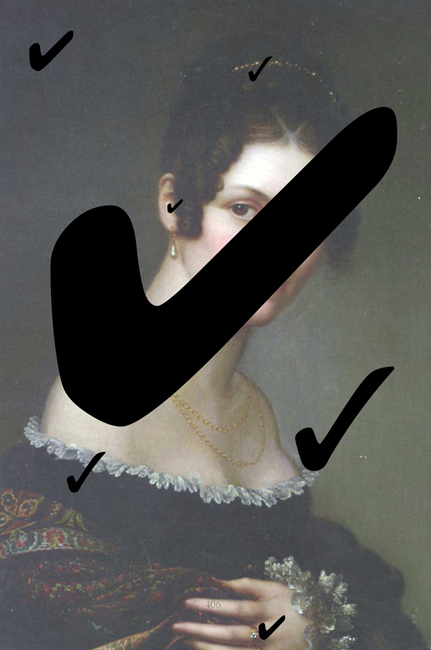IT IS
BLURRED
The world, as we read it, is made of fragments. Discontinuous points—discrete and dispersed.
(So are we. So too our coworkers; our spouses; parents; children; friends…)
We know ourselves and those around us by our readings of them, by the epithets we have given them, by their metaphors, synecdoches, metonymies. Even those we love most in the world. We read them in their fragments and substitutions.
The world for us is a work in progress. And what we understand of it we understand by cobbling these pieces together—synthesizing them over time.
It is the synthesis that we know. (It is all we know.)
And all the while we are committed to believing in the totality—the fiction of seeing.*
*Vision itself, binocular vision, is a fiction—a synthesis—in which we combine two distinct optical views of the world (while subtracting our noses).

When we apprehend the world (the parts of it that are legible to us), we do so one piece at a time. These single pieces of the world are our conscious perceptions. What these conscious perceptions consist of, we don’t know, though we assume that our experience of the world is an admixture of that which is already present, and that which we ourselves contribute (our selves—our memories, opinions, proclivities, and so on).
Authors are curators of experience. They filter the world’s noise, and out of that noise they make the purest signal they can—out of disorder they create narrative. They administer this narrative in the form of a book, and preside, in some ineffable way, over the reading experience. Yet no matter how pure the data set that authors provide to readers—no matter how diligently prefiltered and tightly reconstructed—readers’ brains will continue in their prescribed assignment: to analyze, screen, and sort. Our brains will treat a book as if it were any other of the world’s many unfiltered, encrypted signals. That is, the author’s book, for readers, reverts to a species of noise. We take in as much of the author’s world as we can, and mix this material with our own in the alembic of our reading minds, combining them to alchemize something unique. I would propose that this is why reading “works”: reading mirrors the procedure by which we acquaint ourselves with the world. It is not that our narratives necessarily tell us something true about the world (though they might), but rather that the practice of reading feels like, and is like, consciousness itself: imperfect; partial; hazy; co-creative.
***

Among the great mysteries of life is this fact: The world presents itself to us, and we take in the world. We don’t see the seams, the cracks, and the imperfections.


To the Lighthouse; again.
Lily Briscoe is painting on the lawn…

This painting of hers, with its abstractions, is Woolf’s central metaphor for the act of creation in general—a writer or poet or composer’s reconstruction of this slippery world of ours. More specifically, the painting is a proxy for the book To the Lighthouse by Virginia Woolf.

How does Lily Briscoe’s painting reproduce the scene? Mrs. Ramsay, James, the house, the window?
But the picture was not of them, she said. Or not in his sense. There are other senses too in which one might reverence them. By a shadow here and a light there, for instance. Her tribute took that form if, as she vaguely supposed, a picture must be a tribute. A mother and child might be reduced to a shadow without irreverence.


Writers reduce when they write, and readers reduce when they read. The brain itself is built to reduce, replace, emblemize … Verisimilitude is not only a false idol, but also an unattainable goal. So we reduce. And it is not without reverence that we reduce. This is how we apprehend our world. This is what humans do.
Picturing stories is making reductions. Through reduction, we create meaning.
These reductions are the world as we see it—they are what we see when we read, and they are what we see when we read the world.
They are what reading looks like (if it looks like anything at all).
***
Lily painting:
And she lost consciousness of outer things, and her name and her personality and her appearance, and whether Mr. Carmichael was there or not, her mind kept throwing up from its depths, scenes, and names, and sayings, and memories and ideas, like a fountain spurting over that glaring, hideously difficult white space … But this is one way of knowing people, she thought: to know the outline, not the detail.
The outline. Not the detail.
There it was, her picture. Yes, with all its greens and blues, its lines running up and across, its attempt at something … She looked at the steps; they were empty; she looked at her canvas; it was blurred.
***
It was blurred.
***

 ТЕЛЕГРАМ
ТЕЛЕГРАМ Книжный Вестник
Книжный Вестник Поиск книг
Поиск книг Любовные романы
Любовные романы Саморазвитие
Саморазвитие Детективы
Детективы Фантастика
Фантастика Классика
Классика ВКОНТАКТЕ
ВКОНТАКТЕ